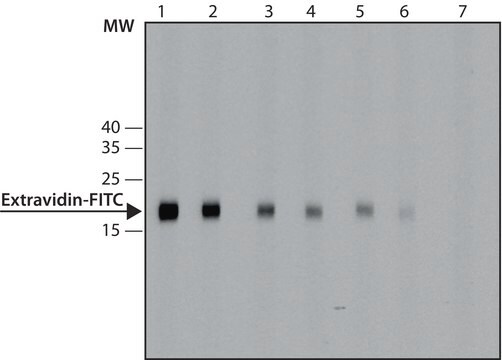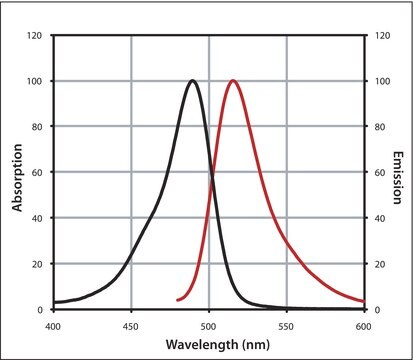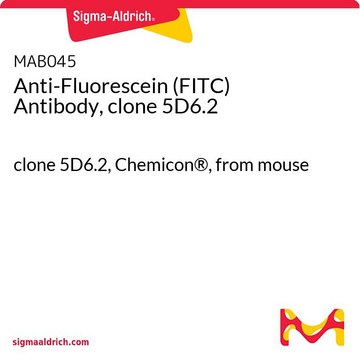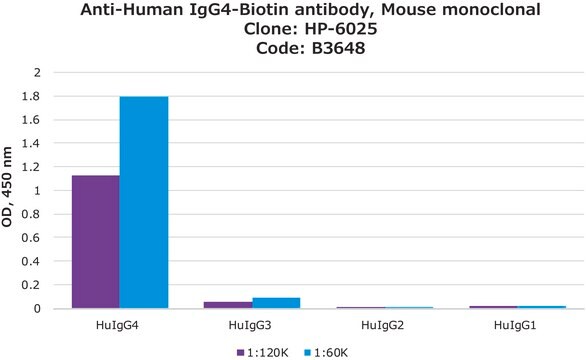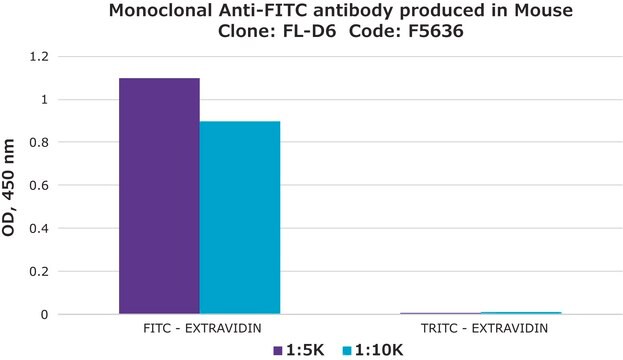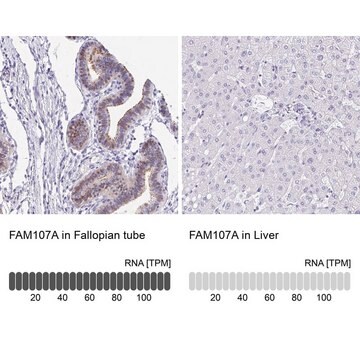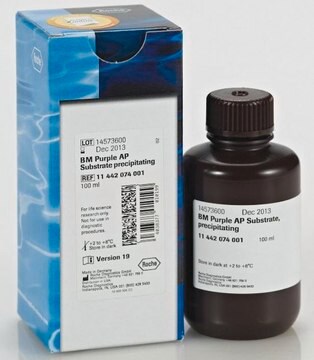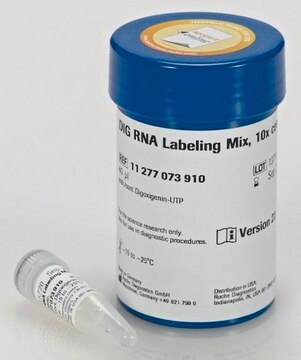Alle Fotos(1)
Wichtige Dokumente
11426338910
Roche
Anti-Fluorescein-AP, Fab fragments
from sheep
Synonym(e):
antibody
Anmeldenzur Ansicht organisationsspezifischer und vertraglich vereinbarter Preise
Alle Fotos(1)
About This Item
UNSPSC-Code:
12352203
Empfohlene Produkte
Biologische Quelle
sheep
Qualitätsniveau
Konjugat
alkaline phosphatase conjugate
Antikörperform
affinity purified immunoglobulin
Antikörper-Produkttyp
primary antibodies
Klon
polyclonal
Form
solution
Verpackung
pkg of 150 U (200 μl)
Hersteller/Markenname
Roche
Isotyp
IgG
Lagertemp.
2-8°C
Allgemeine Beschreibung
Fluorescein is synthesized from m-dialkylaminophenols or resorcinols condensed with phthalic anhydrides under harsh conditions. Fab fragments bind to G proteins.
This gene encodes a member of the SOX (SRY-related HMG-box) family of transcription factors involved in the regulation of embryonic development and in the determination of the cell fate. The encoded protein may act as a transcriptional activator after forming a protein complex with other proteins. This protein acts as a nucleocytoplasmic shuttle protein and is important for neural crest and peripheral nervous system development. Mutations in this gene are associated with Waardenburg-Shah and Waardenburg-Hirschsprung disease. (provided by Ref Seq)
Spezifität
The polyclonal antibody reacts with free and bound fluorescein.
Anwendung
Use Anti-Fluorescein-AP, Fab fragments for the detection of fluorescein-labeled compounds using:
- Dot blot
- ELISA
- Immunohistocytochemistry
- In situ hybridization
- Southern blot
- Western blot
- Electrochemical biosensing technique for the detection of 16S rRNA
Biochem./physiol. Wirkung
Anti-Fluorescein-AP, Fab fragments has been used in oligonucleotide capture, denaturation and detection (CDD).
Leistungsmerkmale und Vorteile
Contents
Solution, stabilized
Solution, stabilized
Angaben zur Herstellung
- Working concentration: The following concentrations depend on application and substrate and should be taken as a guideline. Dot blot: 150mU/ml
- ELISA: 150 to 300mU/ml
- Immunohistocytochemistry: 250 to 500mU/ml
- In situ hybridization: 1.5 to 7.5U/ml
- Southern blot: 150mU/ml
- Western blot: 250 to 500 mU/ml
Working solution: 100mM Tris-HCl, 150mM NaCl, pH 7.5. If necessary 1% Blocking reagent (w/v), dry milk powder, 1 to 5% heat inactivated fetal calf serum (v/v) or sheep normal serum can be used for reduction of unspecific binding.
Sonstige Hinweise
For life science research only. Not for use in diagnostic procedures.
Sie haben nicht das passende Produkt gefunden?
Probieren Sie unser Produkt-Auswahlhilfe. aus.
Signalwort
Warning
H-Sätze
Gefahreneinstufungen
Skin Sens. 1
WGK
WGK 1
Flammpunkt (°F)
No data available
Flammpunkt (°C)
No data available
Hier finden Sie alle aktuellen Versionen:
Besitzen Sie dieses Produkt bereits?
In der Dokumentenbibliothek finden Sie die Dokumentation zu den Produkten, die Sie kürzlich erworben haben.
Kunden haben sich ebenfalls angesehen
Applications And Engineering Of Monoclonal Antibodies (1998)
Simplified Paper Format for Detecting HIV Drug Resistance in Clinical Specimens by Oligonucleotide Ligation
Panpradist N, et al.
PLoS ONE (2016)
Nadia A Fernández-Santos et al.
PLoS neglected tropical diseases, 14(1), e0008008-e0008008 (2020-01-31)
All formerly endemic communities of the Southern Chiapas focus of onchocerciasis in Mexico were treated with ivermectin until parasite transmission was eliminated by 2015. Transmission of onchocerciasis did not resume during a period of three years (2012-2014) following the final
Fluorescent indicators for cytosolic calcium based on rhodamine and fluorescein chromophores
Minta A, et al.
The Journal of Biological Chemistry, 264(14), 8171-8178 (1989)
Mohammad Goudarzi et al.
Developmental cell, 43(5), 577-587 (2017-11-28)
Cell migration is essential for morphogenesis, organ formation, and homeostasis, with relevance for clinical conditions. The migration of primordial germ cells (PGCs) is a useful model for studying this process in the context of the developing embryo. Zebrafish PGC migration
Unser Team von Wissenschaftlern verfügt über Erfahrung in allen Forschungsbereichen einschließlich Life Science, Materialwissenschaften, chemischer Synthese, Chromatographie, Analytik und vielen mehr..
Setzen Sie sich mit dem technischen Dienst in Verbindung.

